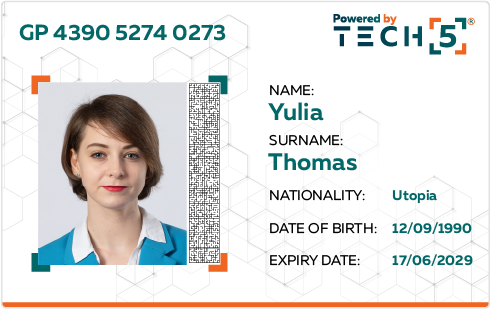Printed ID documents have several levels of protection to prevent forgery and identity theft. Despite the sophisticated features, fraud involving identity theft is a growing problem.
According to an independent financial services 2022 research report, identity fraud losses in the U.S. alone totalled $28 billion and affected 27 million consumers.
T5-FaceLink is a biometric-based digital security feature developed to protect the facial image on a printed identity document from alteration or substitution. It can be used in various scenarios to increase confidence that the document is genuine and belongs to its holder without any specialized tools.

The swapping of the photograph on the document is one of the most common types of fraud, allowing the fraudster to take an existing ID document and create a new ID from it. Fraudulent documents with photo substitution pose significant risks as they facilitate various types of illegal activities, including identity theft, financial fraud, immigration fraud, and other forms of deception. By replacing the original photo with that of another individual, perpetrators can exploit the credibility of the legitimate document, deceive authorities, and circumvent security measures.
T5-FaceLink high-density code contains a biometric face representation generated from the original photo, as well as a digital signature to assert the genuineness of the document. Printed on the document alongside the photo at the stage of document personalization, it ensures that the photo on the document is the same as the one stored in the code. Verification consists of capturing the two together; the software then compares the representation in the code with another representation generated on-the-fly from the printed photo, all in real-time.
How it Works?
T5-FaceLink provides:
To learn more about solving the fraud problem involving use of documents with swapped photographs, read our latest white papers about T5-FaceLink.
The overview white paper describes how adding a biometric-based digital security feature can be used to secure the photo on an identity document from alteration or substitution in various scenarios to increase confidence that the document is genuine and belongs to its holder without any specialized tools.

